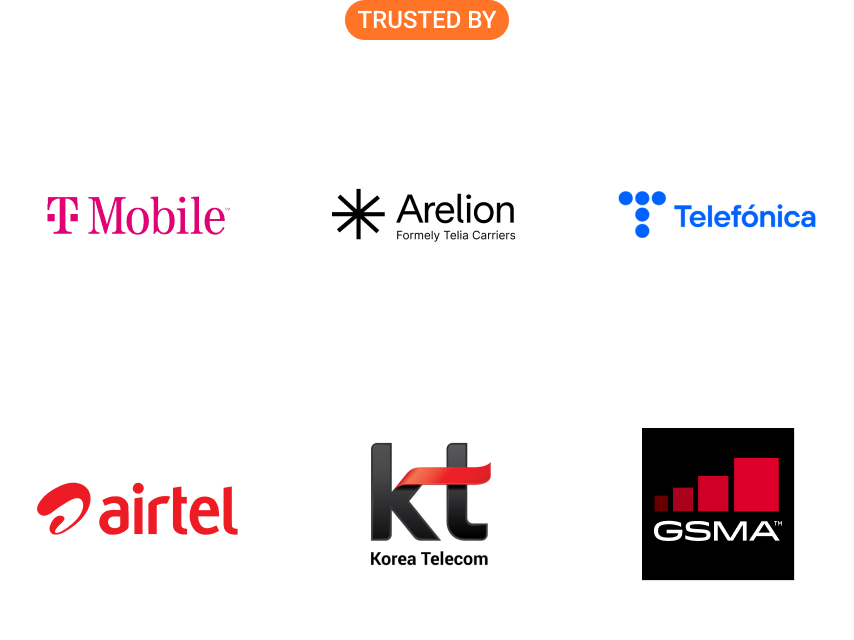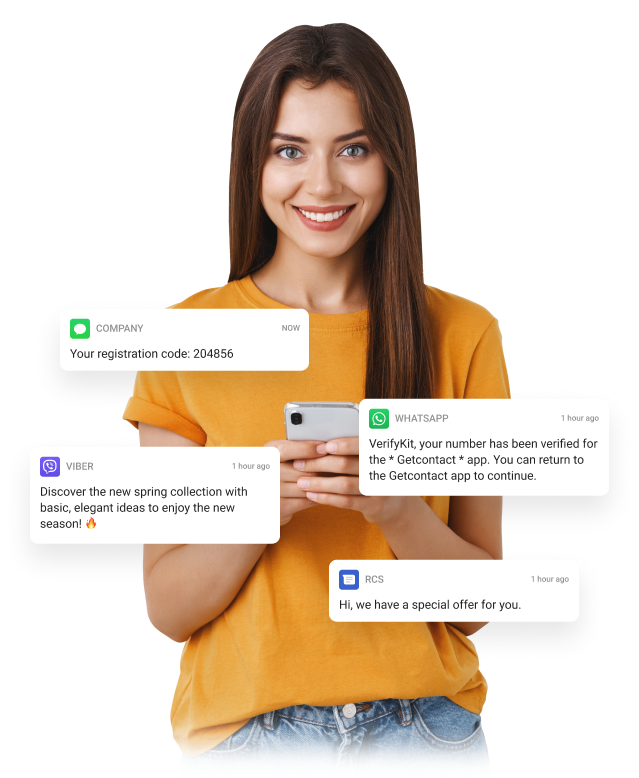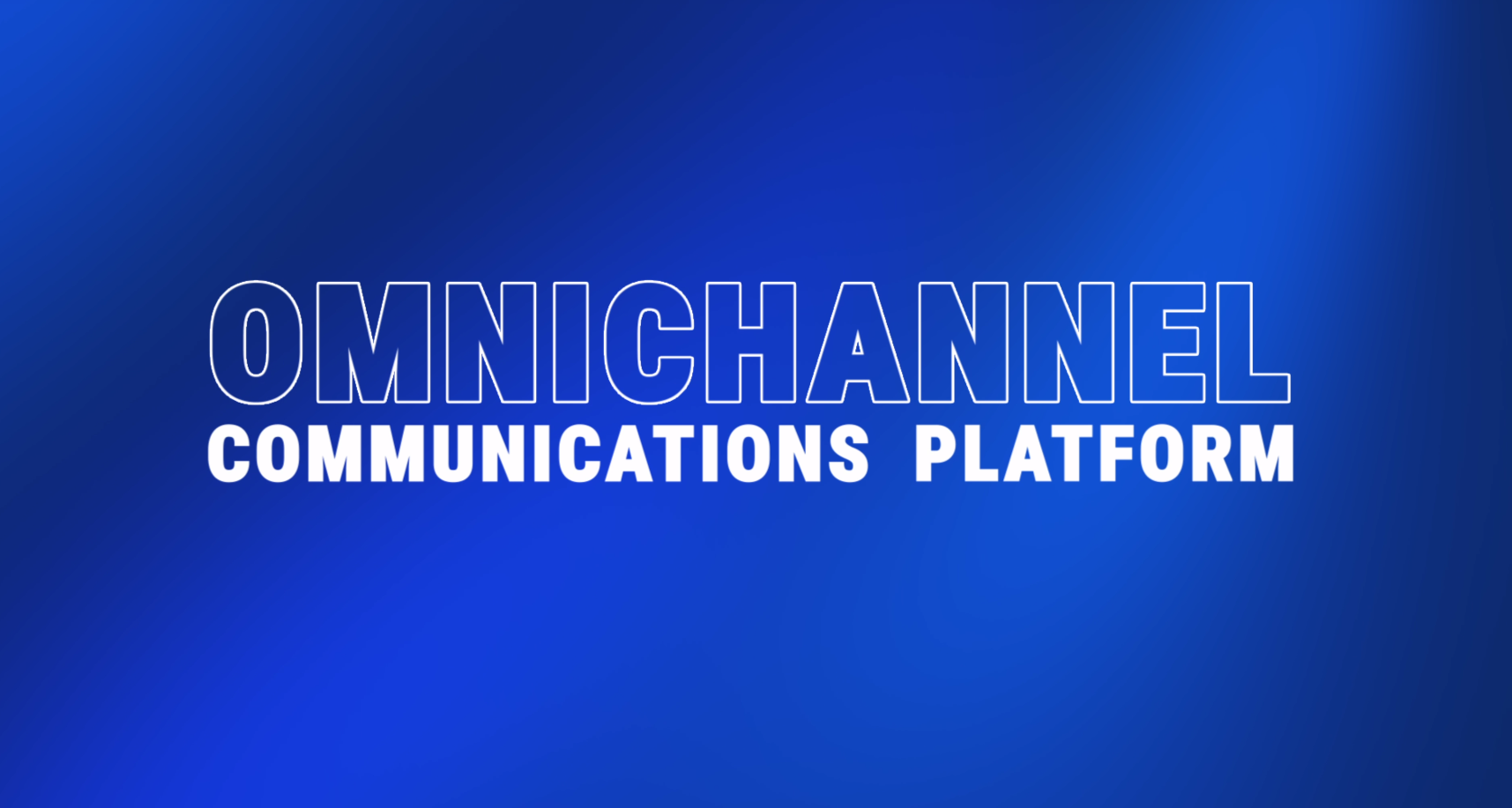-
Products
-
Channels
-
SMS
Most reliable global messaging service for all businesses. -
Viber Business Messaging
Engage customers with rich media messaging on Viber. -
Whatsapp Business Messaging
Boost customer interaction via WhatsApp globally. -
RCS Messaging
Unlock next-generation business messaging with rich media and interactivity. -
Voice (VoIP Gateway)
One global VoIP hub for excellent business calls worldwide.
-
-
Products
-
Messaging Dashboard
Powerful all-in-one platform for business messaging. -
Business Chat
Engage, interact, respond, support and grow with two-way texting at any channel. -
Authentication API
Verify users seamlessly across multiple channels with one powerful API. -
HLR Lookup
Validate numbers for accurate message routing. -
Flash Call
Cost-effective user authentication via Flash Call worldwide.
-
- Features
-
Channels
- Solutions
- Developers
- Customers
- Prices
- Company
- Countries
-
Products
-
Channels
-
SMS
Most reliable global messaging service for all businesses. -
Viber Business Messaging
Engage customers with rich media messaging on Viber. -
Whatsapp Business Messaging
Boost customer interaction via WhatsApp globally. -
RCS Messaging
Unlock next-generation business messaging with rich media and interactivity. -
Voice (VoIP Gateway)
One global VoIP hub for excellent business calls worldwide.
-
-
Products
-
Messaging Dashboard
Powerful all-in-one platform for business messaging. -
Business Chat
Engage, interact, respond, support and grow with two-way texting at any channel. -
Authentication API
Verify users seamlessly across multiple channels with one powerful API. -
HLR Lookup
Validate numbers for accurate message routing. -
Flash Call
Cost-effective user authentication via Flash Call worldwide.
-
- Features
-
Channels
- Solutions
- Developers
- Customers
- Prices
- Company
- Countries

Global Business Messaging Provider & Trusted Voice Carrier
Powered by a carrier-grade platform, Decision Telecom guarantees reliable A2P & P2A messaging, enabling seamless communication for carriers, aggregators, and enterprises.
- Protect your network from fraud and unauthorized traffic
- Ensure secure, high-speed message routing with guaranteed delivery
- Maximize communication efficiency and drive business growth
With over a decade of expertise, Decision Telecom ensures secure & instant A2P message and voice call delivery via 800+ direct operator connections in 190+ countries.
- Protect your network from fraud and unauthorized traffic
- Ensure secure, high-speed message routing with guaranteed delivery
- Maximize communication efficiency and drive business growth

Omnichannel Business Messaging Platform for Customer Service & Marketing Globally
Enhance customer communication with an industry-leading messaging platform and APIs. Automate and personalize interactions via SMS, RCS, Viber, WhatsApp for Business, and more.
- Connect & engage with customers across all channels
- Seamless API integration into your system
- Dedicated account manager & 24/7 support
Enhance customer communication with an industry-leading messaging platform and APIs. Automate and personalize interactions via SMS, RCS, Viber, WhatsApp for Business, and more.

Global Business Messaging Provider & Trusted Voice Carrier
Powered by a carrier-grade platform, Decision Telecom guarantees reliable A2P & P2A messaging, enabling seamless communication for carriers, aggregators, and enterprises.
- Protect your network from fraud and unauthorized traffic
- Ensure secure, high-speed message routing with guaranteed delivery
- Maximize communication efficiency and drive business growth
With over a decade of expertise, Decision Telecom ensures secure & instant A2P message and voice call delivery via 800+ direct operator connections in 190+ countries.
- Protect your network from fraud and unauthorized traffic
- Ensure secure, high-speed message routing with guaranteed delivery
- Maximize communication efficiency and drive business growth

Omnichannel Business Messaging Platform for Customer Service & Marketing Globally
Enhance customer communication with an industry-leading messaging platform and APIs. Automate and personalize interactions via SMS, RCS, Viber, WhatsApp for Business, and more.
- Connect & engage with customers across all channels
- Seamless API integration into your system
- Dedicated account manager & 24/7 support
Enhance customer communication with an industry-leading messaging platform and APIs. Automate and personalize interactions via SMS, RCS, Viber, WhatsApp for Business, and more.

Global Business Messaging Provider & Trusted Voice Carrier
Powered by a carrier-grade platform, Decision Telecom guarantees reliable A2P & P2A messaging, enabling seamless communication for carriers, aggregators, and enterprises.
- Protect your network from fraud and unauthorized traffic
- Ensure secure, high-speed message routing with guaranteed delivery
- Maximize communication efficiency and drive business growth
With over a decade of expertise, Decision Telecom ensures secure & instant A2P message and voice call delivery via 800+ direct operator connections in 190+ countries.
- Protect your network from fraud and unauthorized traffic
- Ensure secure, high-speed message routing with guaranteed delivery
- Maximize communication efficiency and drive business growth



















Increase sales with targeted messaging via SMS, RCS, Viber, WhatsApp Business, and more. Drive engagement and boost conversions.
Connect through 800+ global carriers with fast, secure delivery of business messages — wherever your customers are.
Send SMS, RCS, Viber, WhatsApp Business, and Voice via one API. Use HLR Lookup and number validation to improve delivery.
Get round-the-clock assistance with fast ticket response and dedicated support managers.
All-in-one CPaaS for business messaging


Products
Bulk SMS business messaging can help you to reach all subscribers, even those who are in the roaming area or not using messaging Apps.
Send attractive messages about offers and promotions with a direct link button to your website through Viber Business Messages
Communicate and send messages in bulk to your customers using the world's most popular messaging app WhatsApp
RCS technology allows you to get more features using regular SMS
Gain global reach with reliable delivery and easy personalization for maximum impact
Deliver your messages through SMS, RCS, Viber, WhatsApp, and flash calls. Make sure that your important communications never fail to reach their target audience.
A lightning-fast, reliable solution for phone call verification
A comprehensive all-in-one solution for business messaging across SMS, WhatsApp, Viber, and more
Streamline your SMS, WhatsApp, Viber, and RCS communications through a single, powerful messaging dashboard
Reach your audience with reliable, scalable SMS messaging tailored for enterprises
Reach, engage, convert, and connect with thousands of customers at once using DecisionTelecom’s powerful text blast service
Automate reminders, alerts, personalized updates, notifications, and more to save time and maximize impact
Authenticate users and transactions via SMS, RCS, Viber and WhasApp messages
Sending additional SMS to those subscribers who did not receive a message in Viber
Checking the validity of numbers in the database, deleting invalid numbers from it and determining which ones are in the roaming area
High quality worldwide VoIP voice call service

Network protection from illegal traffic
Get the best rates for SMS, RCS, Viber, and WhatsApp Business Messages with our flexible, pay-as-you-go model. Save more with volume-based discounts when sending 100,000+ messages per month. Our team ensures the most efficient delivery routes for your business messaging and voice calls.
Easily integrate SMS, RCS, Viber, WhatsApp, Voice, HLR, and more with our omnichannel-ready API.
Use it with your web tools and apps — smooth, scalable, and secure.
Start sending business messages instantly with full API access, a user-friendly dashboard, and 24/7 expert support.
var client = new RestClient("web.it-decision.com/v1/api/send-sms"); client.Timeout = -1; var request = new RestRequest(Method.POST); request.AddHeader("Authorization", "Basic api_key"); request.AddHeader("Content-Type", "application/json"); var body = @"{ ""phone"":380632132121, ""sender"":""InfoItd"", ""text"":""This is messages DecisionTelecom"", ""validity_period"":300 }"; request.AddParameter("application/json", body, ParameterType.RequestBody); IRestResponse response = client.Execute(request); Console.WriteLine(response.Content);
var myHeaders = new Headers(); myHeaders.append("Authorization", "Basic api_key"); myHeaders.append("Content-Type", "application/json"); var raw = JSON.stringify({ "phone": 380632132121, "sender": "InfoItd", "text": "This is messages DecisionTelecom", "validity_period": 300 }); var requestOptions = { method: 'POST', headers: myHeaders, body: raw, redirect: 'follow' }; fetch("web.it-decision.com/v1/api/send-sms", requestOptions) .then(response => response.text()) .then(result => console.log(result)) .catch(error => console.log('error', error));
OkHttpClient client = new OkHttpClient().newBuilder() .build(); MediaType mediaType = MediaType.parse("application/json"); RequestBody body = RequestBody.create(mediaType, "{\"phone\":380632132121,\"sender\":\"InfoItd\",\"text\":\"This is messages DecisionTelecom\",\"validity_period\":300}"); Request request = new Request.Builder() .url("web.it-decision.com/v1/api/send-sms") .method("POST", body) .addHeader("Authorization", "Basic api_key") .addHeader("Content-Type", "application/json") .build(); Response response = client.newCall(request).execute();
$curl = curl_init(); curl_setopt_array($curl, array( CURLOPT_URL => 'web.it-decision.com/v1/api/send-sms', CURLOPT_RETURNTRANSFER => true, CURLOPT_ENCODING => '', CURLOPT_MAXREDIRS => 10, CURLOPT_TIMEOUT => 0, CURLOPT_FOLLOWLOCATION => true, CURLOPT_HTTP_VERSION => CURL_HTTP_VERSION_1_1, CURLOPT_CUSTOMREQUEST => 'POST', CURLOPT_POSTFIELDS =>'{ "phone":380632132121, "sender":"InfoItd", "text":"This is messages DecisionTelecom", "validity_period":300 }', CURLOPT_HTTPHEADER => array( 'Authorization: Basic api_key', 'Content-Type: application/json', ), )); $response = curl_exec($curl); curl_close($curl); echo $response;
import http.client import json conn = http.client.HTTPSConnection("web.it-decision.com") payload = json.dumps({ "phone": 380632132121, "sender": "InfoItd", "text": "This is messages DecisionTelecom", "validity_period": 300 }) headers = { 'Authorization': 'Basic api_key', 'Content-Type': 'application/json' } conn.request("POST", "/v1/api/send-sms", payload, headers) res = conn.getresponse() data = res.read() print(data.decode("utf-8"))
package main import ( "fmt" "strings" "net/http" "io/ioutil" ) func main() { url := "web.it-decision.com/v1/api/send-sms" method := "POST" payload := strings.NewReader(`{ "phone":380632132121, "sender":"InfoItd", "text":"This is messages DecisionTelecom", "validity_period":300 }`) client := &http.Client {} req, err := http.NewRequest(method, url, payload) if err != nil { fmt.Println(err) return } req.Header.Add("Authorization", "Basic api_key") req.Header.Add("Content-Type", "application/json") res, err := client.Do(req) if err != nil { fmt.Println(err) return } defer res.Body.Close() body, err := ioutil.ReadAll(res.Body) if err != nil { fmt.Println(err) return } fmt.Println(string(body)) }
var axios = require('axios'); var data = JSON.stringify({ "phone": 380632132121, "sender": "InfoItd", "text": "This is messages DecisionTelecom", "validity_period": 300 }); var config = { method: 'post', url: 'web.it-decision.com/v1/api/send-sms', headers: { 'Authorization': 'Basic api_key', 'Content-Type': 'application/json' }, data : data }; axios(config) .then(function (response) { console.log(JSON.stringify(response.data)); }) .catch(function (error) { console.log(error); });
import http.client import json conn = http.client.HTTPSConnection("web.it-decision.com") payload = json.dumps({ "phone": 380632132121, "sender": "InfoItd", "text": "This is messages DecisionTelecom", "validity_period": 300 }) headers = { 'Authorization': 'Basic api_key', 'Content-Type': 'application/json' } conn.request("POST", "/v1/api/send-sms", payload, headers) res = conn.getresponse() data = res.read() print(data.decode("utf-8"))






News and Events
Connect with your customers anywhere in the world through a next-generation business messaging platform. Enhance customer engagement with SMS, RCS, Viber, and WhatsApp—all in one powerful solution. Launch your messaging campaigns effortlessly with DecisionTelecom!
Efficient SMS service
Modern methods of doing business require the implementation of all existing innovative technologies. The widespread development of communication industry has made the service of sending SMS is truly the leading method. The ability to selectively provide information about the company increases interest in its services on the part of the customer. Thus, it achieves all the basic conditions that are good for a business focused on success. The commercial effect of the tool is felt almost immediately and is significantly reflected in the increase in sales and operating profits.
In large companies, the SMS API service often has a dedicated division that interacts with service providers. But most commercial projects are unable to afford the expanded staff of technical personnel. The company "IT-Decision Telecom" will allow the customer of any level to promulgate their services by using such a method as bulk messaging. A flexible pricing policy makes this approach affordable even for customers with a limited budget for advertising costs.
Provide information about yourself to the client
API abbreviation means application programming interface. This concept includes a complex package of operational commands for the interaction of programs with each other in remote mode. The technology is great for the distribution of SMS by brand for business. Proper adjustment of the service requires specialized knowledge, which have the staff of the company "IT-Decision Telecom". Sufficient work experience in this area, as well as possession of comprehensive knowledge in the field of computer networks is the key to good results. Our company trusts the implementation of products in all areas of business.
API text messaging uses short messages as the main tool. With a limited amount of text, it is possible to deliver the main brand message to the client. Even in a few sentences will include the main points, which may be useful to buyers of goods or services. There is no nastiness and information content of classic visual advertising, which can often withdraw by itself. In just a few seconds, the entire volume of a short announcement is captured, which means that the decision on its use can be taken as quickly as possible.
A quick start for your business
Among the main advantages of SMS API, useful for any business, are:
- The efficiency of online services;
- Wide audience;
- Available cost of connection;
- Discounts during a comprehensive or standing order of services;
- The possibility of hunting the whole territory of Ukraine.
Standard advertising companies with the use of traditional mass media are very expensive. Posting ads on websites is effective, but can be blocked by users through special programs. In contrast, an SMS from a brand will be accepted by the potential buyer by 100%. Taking into account the total volume of messages that are sent, the overall ratio of companies of this kind is very high and is definitely worth the price paid for it.
If you doubt the effectiveness of this method, positive feedback from our customers will be the best argument for its support. SMS overload via API will allow you to accelerate the pace of commercial growth of the company.
Modern methods of product promotion
Decision Telecom company offers the most required SMS APIs, which enable information dissemination by means of common short messages of mobile operators, Viber, WhatsApp and other popular messengers. Instant communication of important information to customers creates an image of a responsible company and provides a quick call for transactions or deals. The service has a flexible setting and allows you to easily adjust the work.
The advantage of working with us is a wide advisory support in the selection of the final set of tools. We professionally recommend what and how best to order for a particular business situation. There are certain peculiarities of the organization of the distribution, which are required to the accounting depending on the activity.
The total price for connection and setup is based on the full scope of work and its specific features. In any case, co-workers IT-Decision Telecom will not offer you a busy or duplicate the basic functions of the service. Our priority is to provide maximum customer support at the lowest possible cost to the customer, allowing for long-term productive cooperation.


